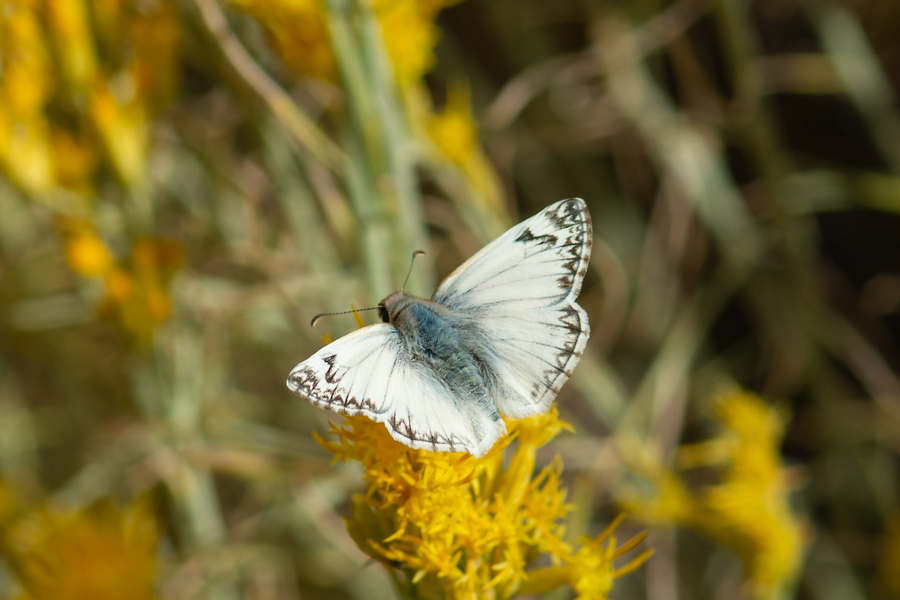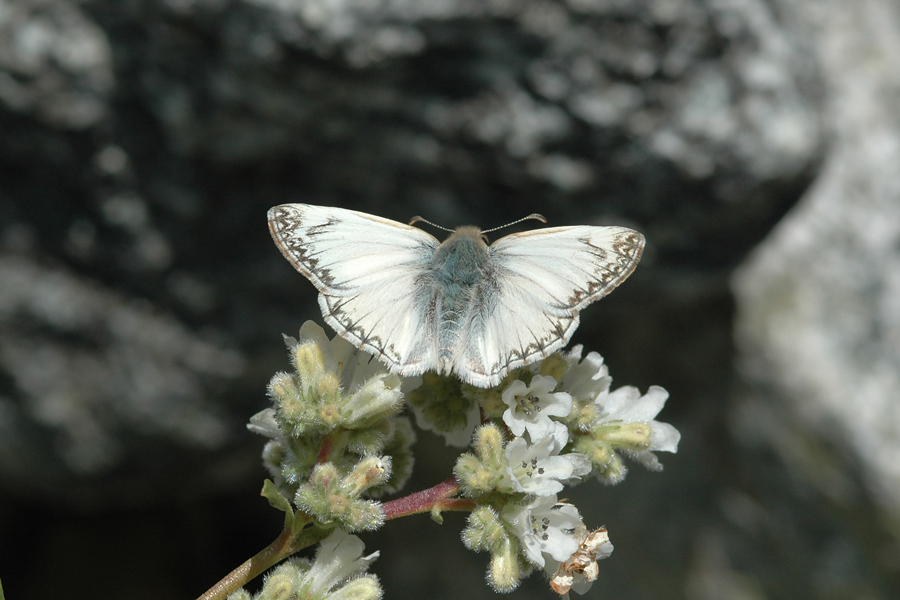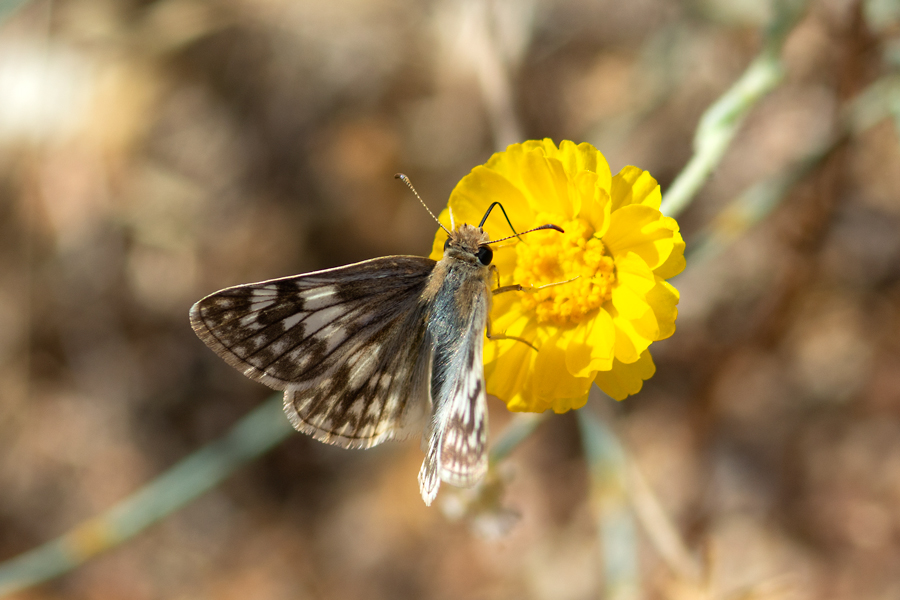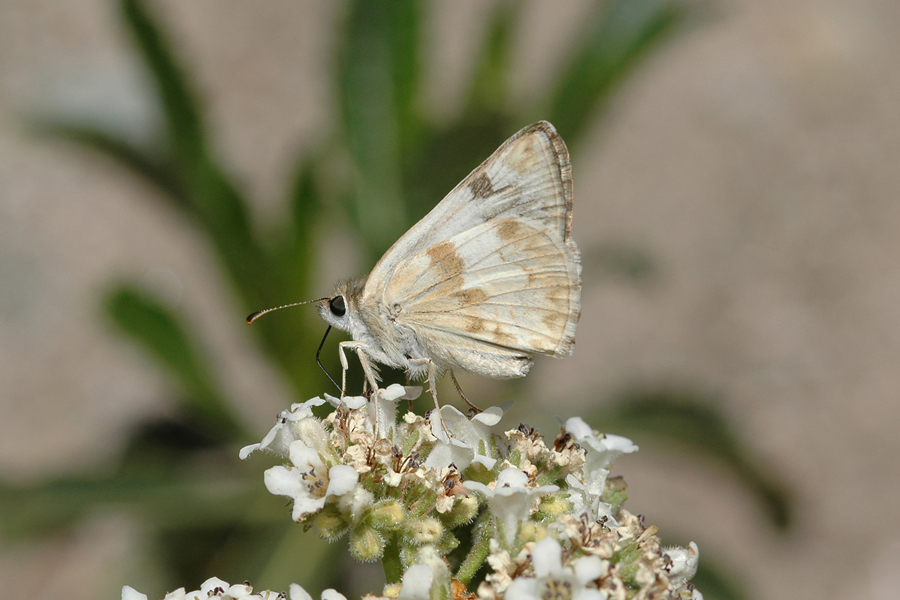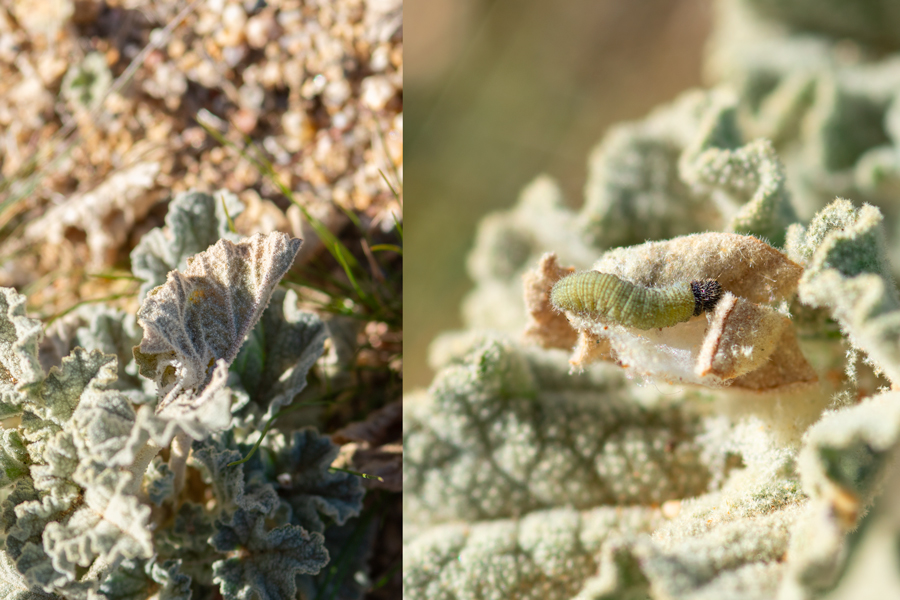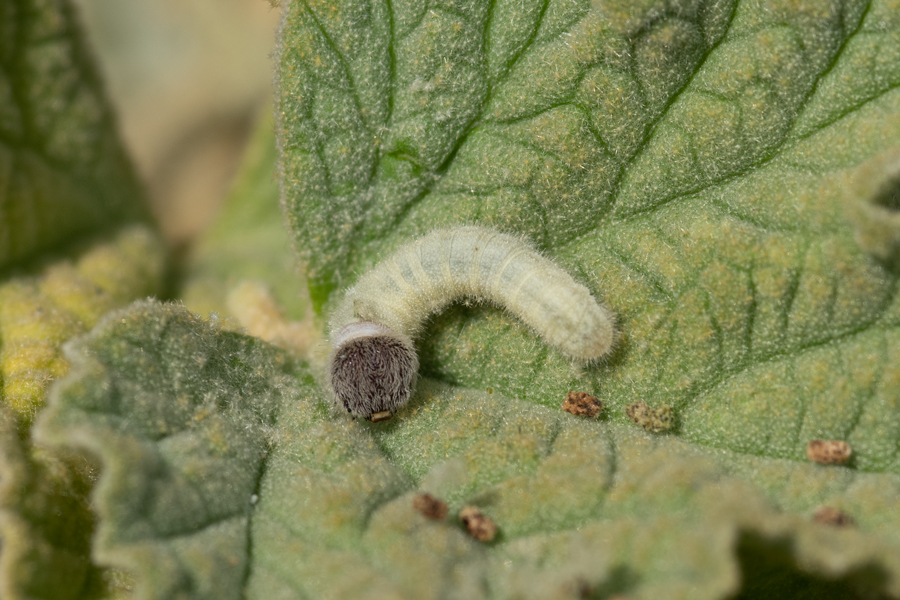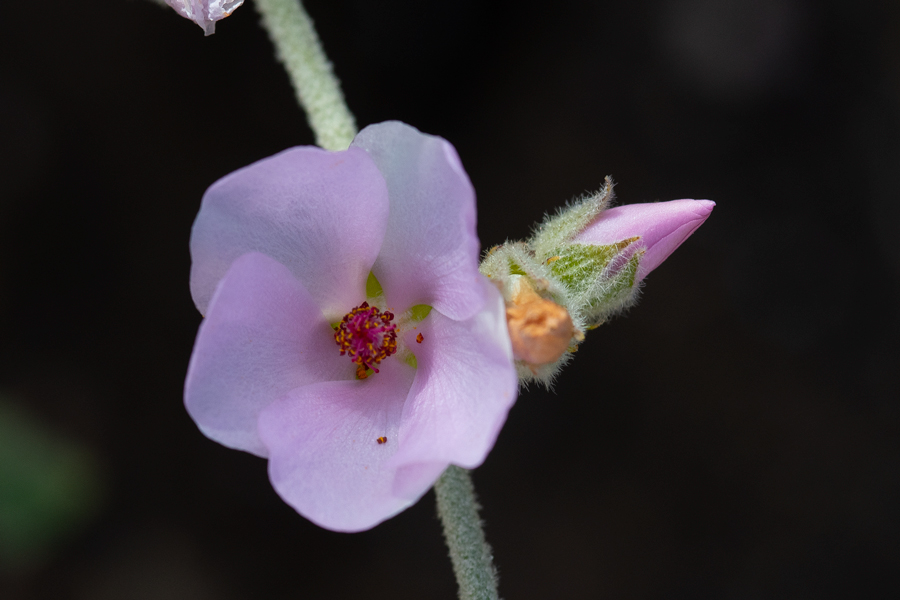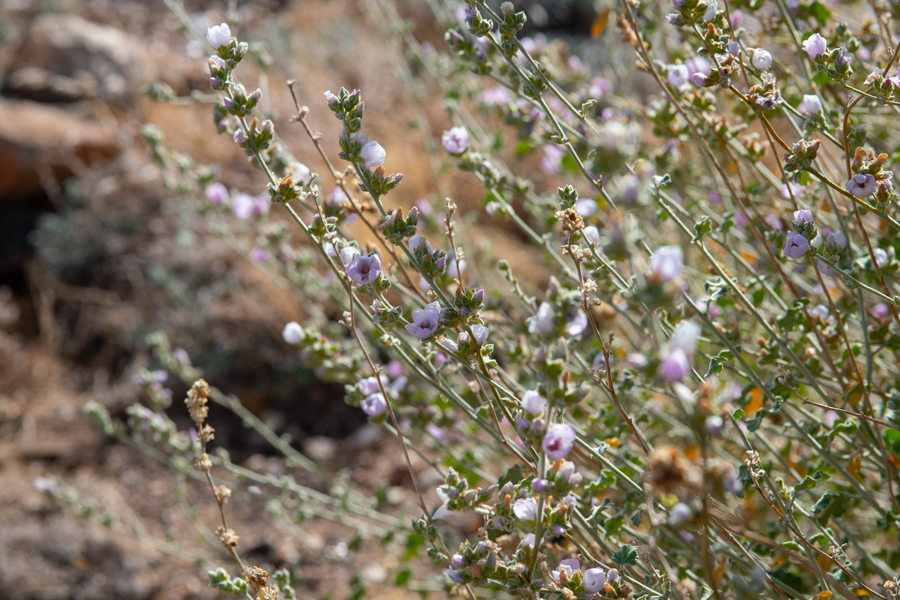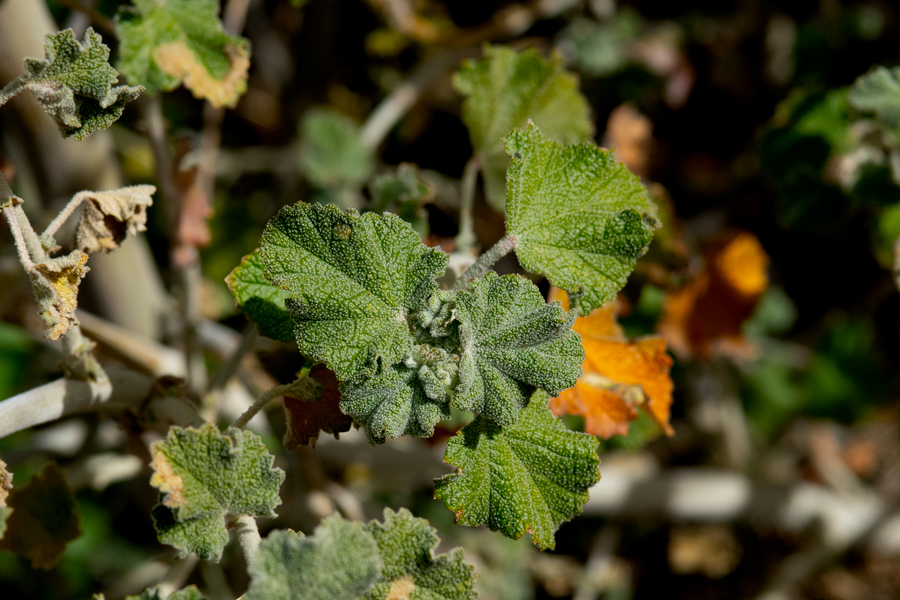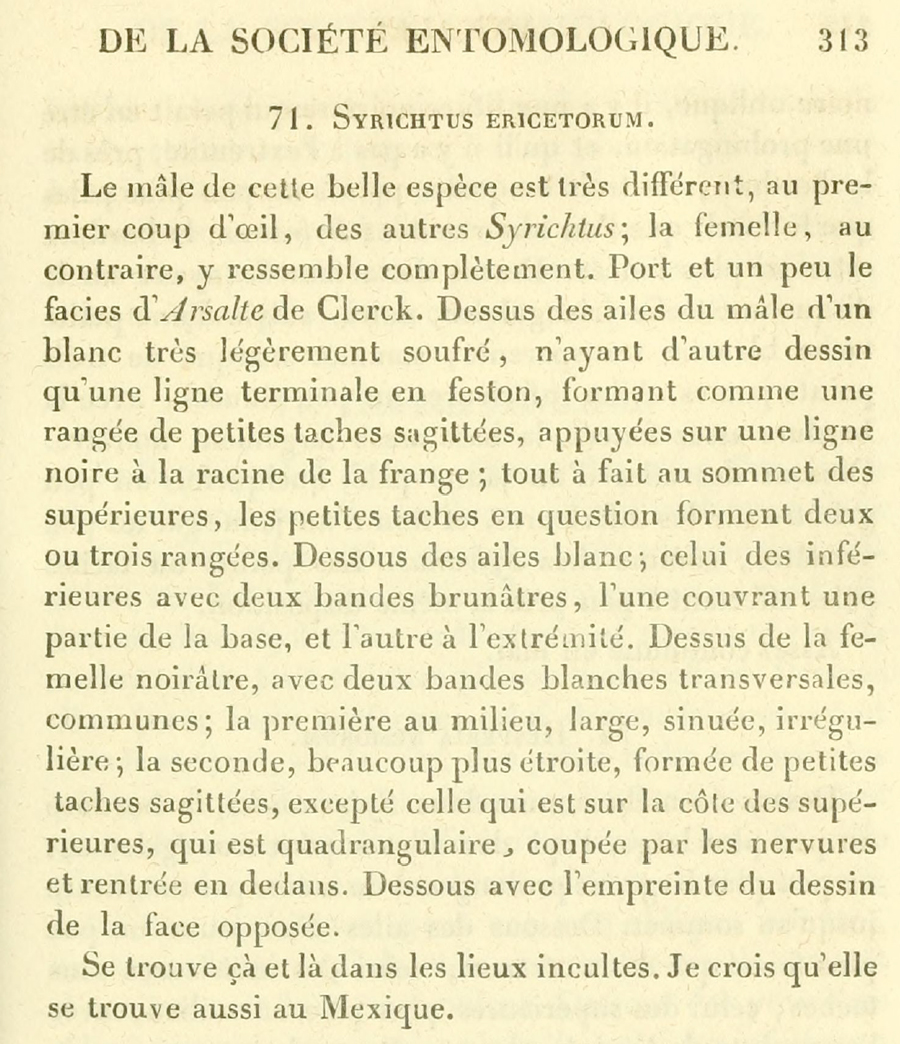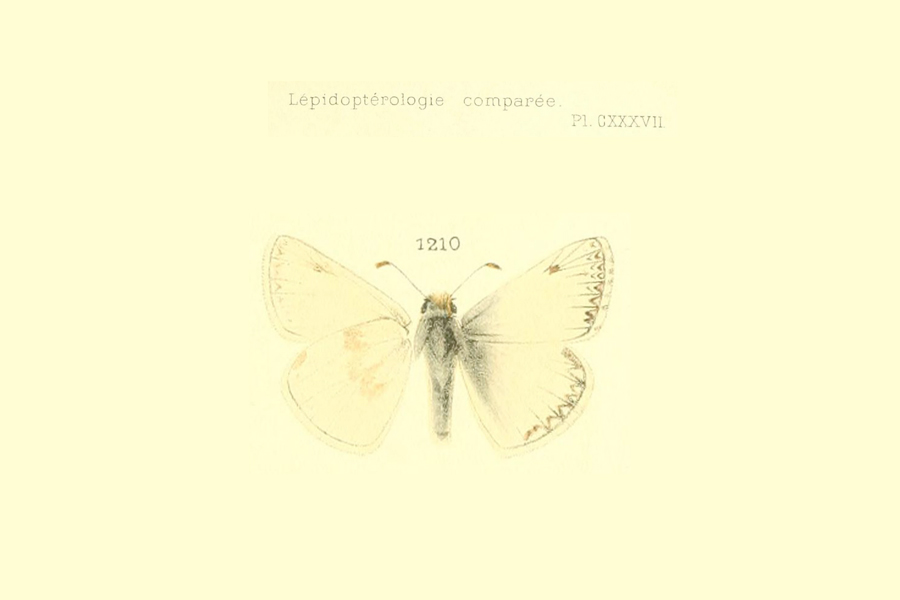Heliopetes ericetorum
Northern White Skipper
The northern white skipper can be common in cismontane southern California, especially desert edges and mountains where wild mallows such as Sphaeralcea ambigua (apricot mallow) and Malacothamnus fasciculatus (chaparral bushmallow) thrive. Males are nearly white; females much more darkly patterned. Females oviposit on young mallow leaves, which is where the larvae feed and create protective nests by rolling up the leaves. They fly much of the year (my records are from February through November in various places), but seem especially common in the fall.
This is another "gold rush" butterfly named by Boisduval in 1852 from those collected by Pierre Lorquin. According to Emmel, Emmel, and Mattoon (Systematics, p.20), Lorquin likely collected this butterfly in the northern Sierra Nevada foothills. The type locality was therefore restricted to "the vicinity of Sawmill Creek at Griffin Gulch, rim of West Branch Feather River, 2 air miles E. of Magalia, Butte County, California."
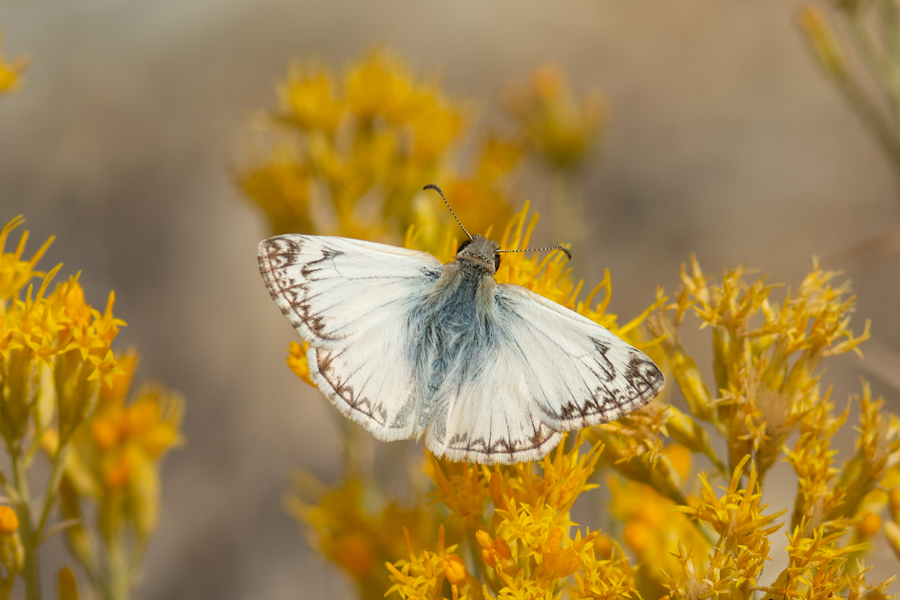
A male northern white skipper on Frazier Park Road. September 22, 2019.
Also flying along Frazier Park Road on the same hike as above was this male, which had blacker markings.
Another male. This one was at Icehouse Canyon near Mt. Baldy, May 31, 2008.
A female Heliopetes ericetorum from Joshua Tree National Park. August 27, 2019.
I saw this female northern white skipper on the Cougar Crest Trail at Big Bear, May 26, 2006.
Ventral view. From Big Rock Creek on the north side of the San Gabriels, May 13, 2007.
A female oviposited on apricot mallow at Cactus Spring Trail and I was able to get the egg and photograph it under the microscope. May 10th, 2024.
Caterpillars of Heliopetes ericetorum spend the winter in silken nests made from a leaf on their food plants, in this case, Sphaeralcea ambigua.
A different caterpillar. Note the hairy head capsule, a clue that this is ericetorum, not albezens or scriptura. I raised this one to adult to be sure of the identification.
Flower of Malacothamnus fasciculatus, a larval food plant of Heliopetes ericetorum. This was at Cactus Spring Trail on December 16th, 2023.
Another Malacothamnus fasciculatus.
Finally, leaves of Malacothamnus fasciculatus.
Here is Boisduval's original description, from "Lepidoptères de la Californie," in the French journal Annales de la Société Entomologique de France, published in 1852.
Charles Oberthür was first to publish an illustration of the skipper Boisduval had described. This was in the 1912 edition of Études de Lépidoptérologie Comparée, plate 137 (male only).
©Dennis Walker

